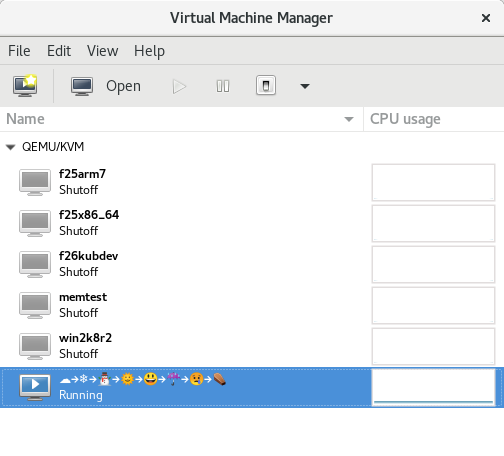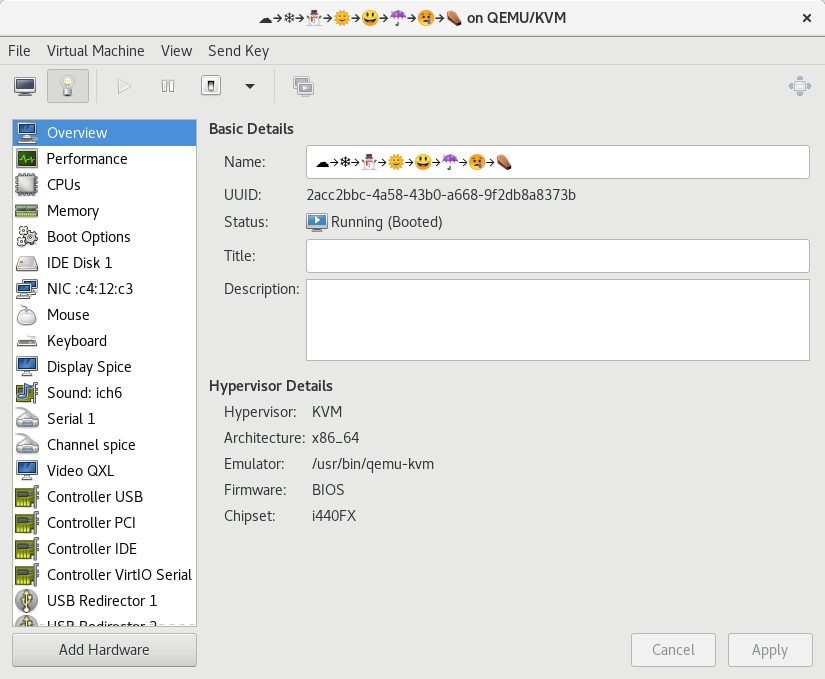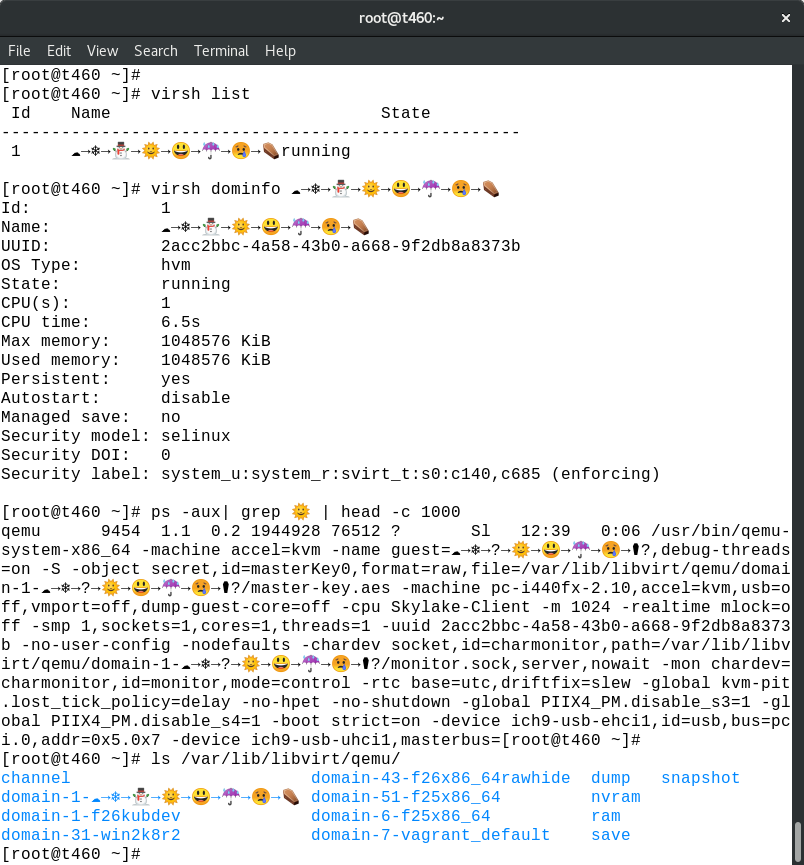Quite by chance today I discovered that Fedora 27 can display full colour glyphs for unicode characters that correspond to emojis, when the terminal displaying my mutt mail reader displayed someone’s name with a full colour glyph showing stars:

Mutt in GNOME terminal rendering color emojis in sender name
Chatting with David Gilbert on IRC I learnt that this is a new feature in Fedora 27 GNOME, thanks to recent work in the GTK/Pango stack. David then pointed out this works in libvirt, so I thought I would illustrate it.

Virtual machine name with full colour emojis rendered
No special hacks were required to do this, I simply entered the emojis as the virtual machine name when creating it from virt-manager’s wizard

Virtual machine name with full colour emojis rendered
As mentioned previously, GNOME terminal displays colour emojis, so these virtual machine names appear nicely when using virsh and other command line tools

Virtual machine name rendered with full colour emojis in terminal commands
The more observant readers will notice that the command line args have a bug as the snowman in the machine name is incorrectly rendered in the process listing. The actual data in /proc/$PID/cmdline is correct, so something about the “ps” command appears to be mangling it prior to output. It isn’t simply a font problem because other comamnds besides “ps” render properly, and if you grep the “ps” output for the snowman emoji no results are displayed.
For many years now, the virt-manager application has been the primary open source tool for managing virtual machines under libvirt for Fedora/Linux hosts, attempting to satisfy both server and desktop users alike, with the result that often neither userbase were really too happy. The decision to use libvirt as the foundation of OpenStack, OpenNebula and various other cloud projects has been a great validation of libvirt’s capabilities. More recently, the open sourcing of the RHEV-M product to create the oVirt community project, has seen another step forward for open source data center virtualization management based upon libvirt. Finally, with today’s very first release of GNOME Boxes, the same step forward is also happening for Linux desktop virtualization. No longer will desktop virtualization (or remote desktop access) feel like an afterthought, but rather it will be a seamless part of the GNOME-3 desktop experience. This is coming to a Fedora release near you soon….the target is Fedora 17.
What does this mean for virt-manager you might wonder ? Well first of all let me reassure people that virt-manager isn’t going away anytime in the forseeable future. There will always be people who prefer straightforward, directly controllable applications which do not try to impose clever policies on their usage. virt-manager, virsh, virt-install, etc all fill this gap and we don’t want to take that control away from people. With the growth in usage of OpenStack for cloud, oVirt for data center management, and GNOME Boxes for desktop virtualization, I think it is clear though, that virt-manager will have a diminished role / userbase in the future. I don’t consider this to be bad thing, on the contrary, it shows just how strong & diverse the open source virtualization community has become. Where once there was only virt-manager, today we have a wide choice of applications providing highly effective virtualization solutions targeted towards the needs of their respective userbases.


